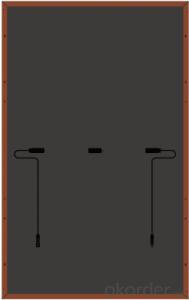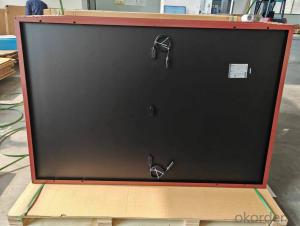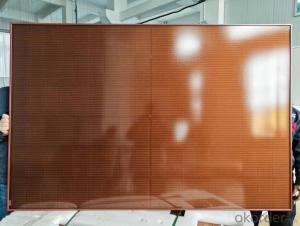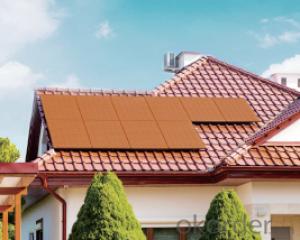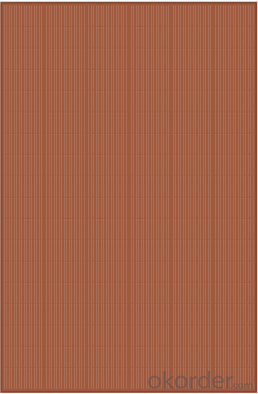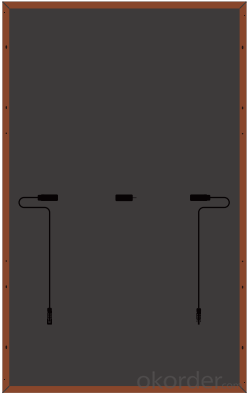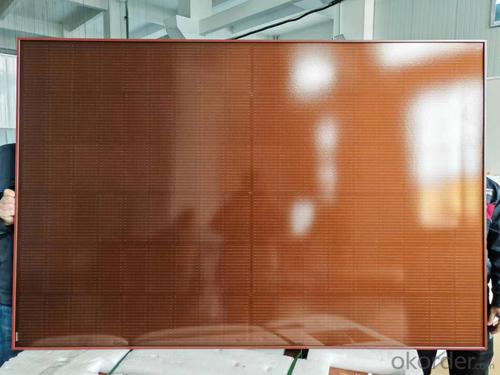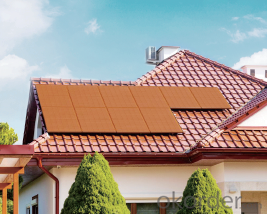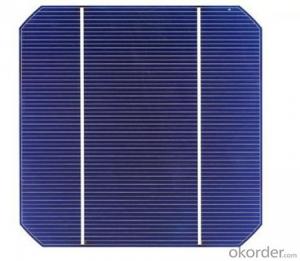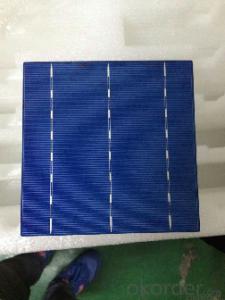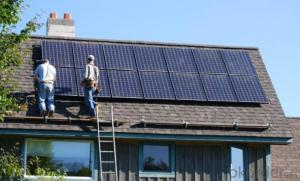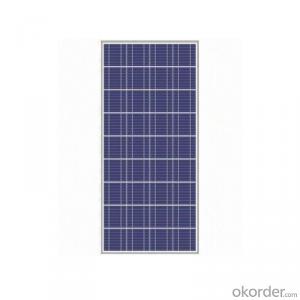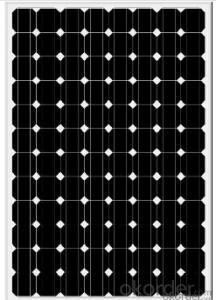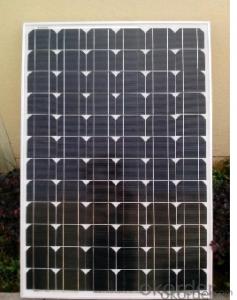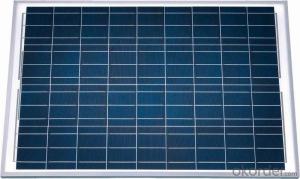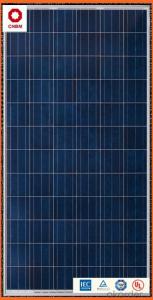Cecox 350W Orange-Colored Mono Solar Panels with High Voc Isc Solar Cells for Building Facade Integration
- Loading Port:
- Stock in Panama
- Payment Terms:
- TT or LC
- Min Order Qty:
- 36 pc
- Supply Capability:
- 100000 pc/month
OKorder Service Pledge
OKorder Financial Service
You Might Also Like
Specification
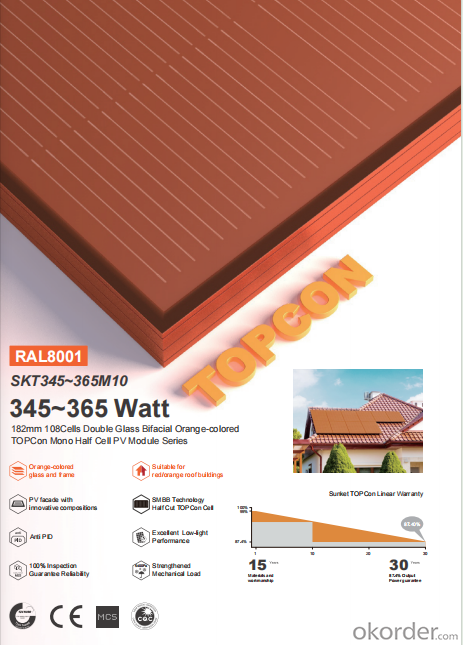
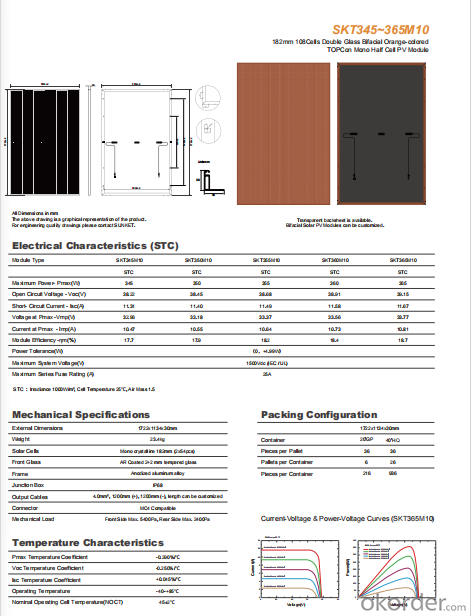
Company presentation
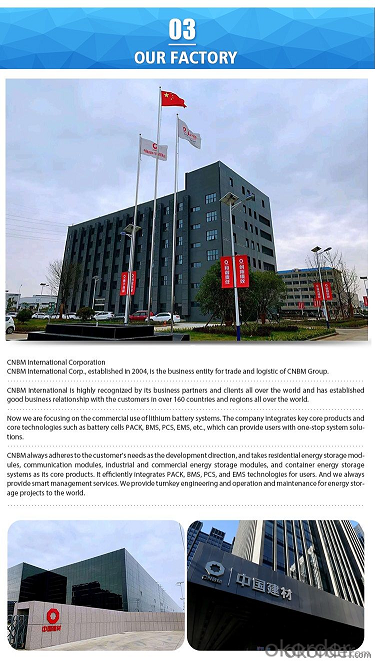
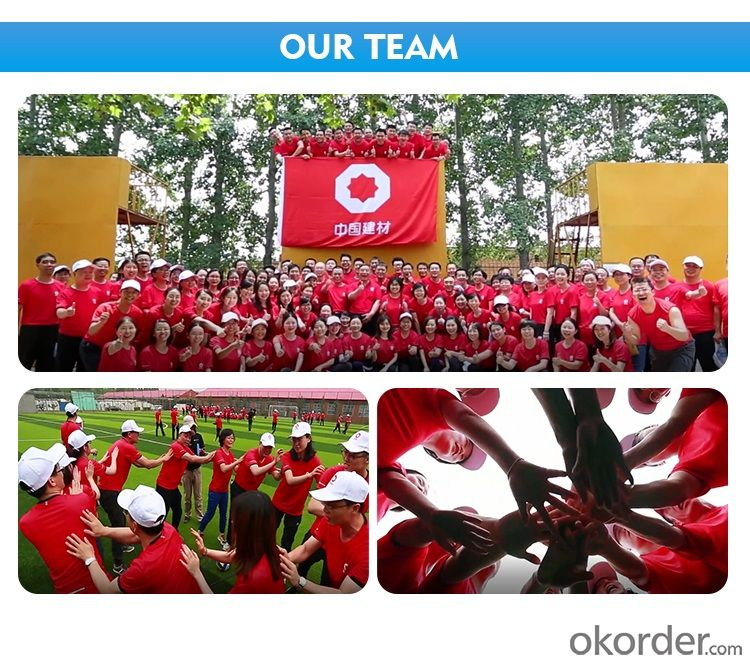
RFQ
Q: Do you have CE?
A: Yes, our products are approved by CE.
Q: Is OEM &ODM available in your factory ?
A: Yes, you just offer us necessary documents and then we will produce the products as your requirements.
Q: What is your Delivery time?
A: Usually, we make merchandise inventory. If we have the products in stock, the delivery time is 5-10 days after receiving the deposit; If we don’t have the products in stock, we will arrange the production right now.
The delivery time will be 10-30 days. It depends on the quantity of order.
Q:Why choose us?
A: 1. Ready To Ship 2. Sample Available 3. One-Stop Service 4. Online customization5. Many years' experiences of manufacturing and service available in 24hours
- Q: How do solar cells handle voltage fluctuations in the grid?
- Solar cells do not directly handle voltage fluctuations in the grid. However, inverters, which are connected to solar cells, play a crucial role in managing voltage fluctuations by converting the direct current (DC) generated by solar cells into alternating current (AC) that matches the grid's voltage and frequency. Inverters also have the ability to regulate voltage and synchronize with the grid, ensuring stability and safe integration of solar power into the grid.
- Q: What are the tin bands, sinks and interconnections used on solar modules, and what are the solar cells used in the solar cells?
- The bus bar and the interconnection are of the same effect, are collected with the charge, the interconnection of a single cell is to collect the charge
- Q: How do solar cells perform in areas with high levels of air pollutants?
- Solar cells generally perform less efficiently in areas with high levels of air pollutants. Air pollutants, such as smog, dust, and particulate matter, can accumulate on the surface of solar panels, reducing their ability to absorb sunlight. This buildup of pollutants creates a barrier between the sun and the solar cells, decreasing their overall performance and energy production. Additionally, air pollutants can also block and scatter sunlight, further diminishing the amount of sunlight reaching the solar cells. Therefore, in areas with high levels of air pollutants, regular cleaning and maintenance of solar panels are necessary to ensure optimal performance.
- Q: Can solar cells be used in smart grid systems?
- Yes, solar cells can be used in smart grid systems. Solar cells can generate electricity from sunlight and can be integrated into the smart grid infrastructure to provide renewable energy sources. This allows for decentralized power generation and can help reduce reliance on traditional energy sources, making the grid more sustainable and efficient. Additionally, smart grid systems can enable the efficient management and distribution of the electricity generated by solar cells, further enhancing their integration into the grid.
- Q: Can solar cells be used in areas with high pollution?
- Yes, solar cells can still be used in areas with high pollution. While pollution can reduce the efficiency of solar cells by blocking sunlight, advancements in technology have made solar panels more resilient. Additionally, regular maintenance and cleaning can help mitigate the impact of pollution on solar panels.
- Q: The advantages and effects of solar energy
- The advantages of solar energy: solar energy as a new energy, it has three characteristics compared with conventional energy: First: it is the most abundant energy available to humans.It is estimated that in the past 1.1 billion years, the sun consumed Its own energy of 2% .In the future enough to supply the Earth human beings, the use of billions of year
- Q: How do solar cells perform in urban environments?
- Solar cells can perform well in urban environments, although their efficiency may be slightly reduced compared to more ideal conditions. The presence of tall buildings and shadows can partially block sunlight, affecting the overall energy output. However, advancements in solar technology, such as the use of bifacial panels and improved tracking systems, can help mitigate these challenges by capturing light from multiple angles and adapting to changing conditions. Moreover, the increasing installation of solar panels on rooftops, facades, and other urban structures is significantly contributing to the adoption of renewable energy in cities.
- Q: What is the cost of producing a solar cell?
- The cost of producing a solar cell can vary depending on various factors such as the type and size of the cell, manufacturing technology, materials used, and economies of scale. On average, the cost ranges from $0.15 to $0.40 per watt for the production of a standard crystalline silicon solar cell. However, with advancements in technology and increasing global demand, the cost has been steadily decreasing over the years.
- Q: How do solar cells perform in areas with high levels of salt spray?
- Solar cells generally do not perform well in areas with high levels of salt spray. The salt particles can accumulate on the surface of the solar cells, reducing their efficiency by blocking sunlight and corroding the electrical components. Regular cleaning and maintenance are required to mitigate the negative impacts of salt spray on solar panels in such areas.
- Q: Can solar cells be used in hot climates?
- Yes, solar cells can be used in hot climates. In fact, solar cells are more efficient in hot climates due to increased sunlight and higher temperatures, which can enhance their overall performance. However, it is important to consider proper maintenance and cooling mechanisms to prevent any potential damage or decrease in efficiency caused by excessive heat.
Send your message to us
Cecox 350W Orange-Colored Mono Solar Panels with High Voc Isc Solar Cells for Building Facade Integration
- Loading Port:
- Stock in Panama
- Payment Terms:
- TT or LC
- Min Order Qty:
- 36 pc
- Supply Capability:
- 100000 pc/month
OKorder Service Pledge
OKorder Financial Service
Similar products
Hot products
Hot Searches
Related keywords

